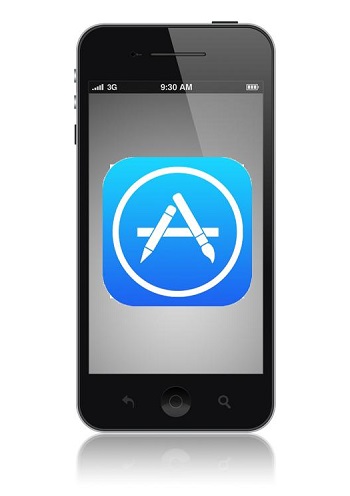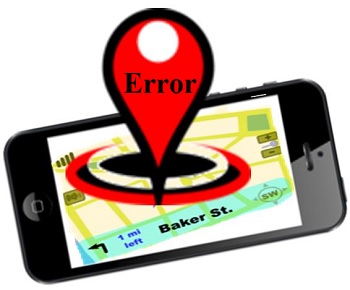The company has also posted profits of $13.6 billion total for that same quarter, driven by iPhone sales.
The tech giant has now released some of its figures with regards to its revenues for the second quarter of this year and it has shown that the Apple App Store has now experienced its best quarter on record.
The revenues for the App Store were up 29 percent when compared to the same quarter in 2014.
Despite the fact the data that was released did not include specific revenue figures, it did reveal that the service revenue from Apple app, iBook, and Pay came to a record breaking $5 billion in total. The company has reported total profits of $13.6 billion for the quarter, which is an increase of 33 percent, year over year. Moreover, it also reported total revenues of $58 billion, which represents a year over year increase of 27 percent.
The quarter, itself, was a strong one, but even the Apple app sales still weren’t enough to bring the total as high as Q1.
 The overall performance of the first quarter of 2015 was still notably stronger, if only because it was one that included the holiday shopping period, which is always the highest of the year. When compared to the first quarter, the revenues at Apple dropped by 22 percent, and the profits dipped by 24.4 percent. Sales of iPhones fell by 18 percent.
The overall performance of the first quarter of 2015 was still notably stronger, if only because it was one that included the holiday shopping period, which is always the highest of the year. When compared to the first quarter, the revenues at Apple dropped by 22 percent, and the profits dipped by 24.4 percent. Sales of iPhones fell by 18 percent.
Most of the revenues that were generated in the second quarter were the result of the sales of iPhones. There were 61.2 million Apple iPhones sold in that quarter, alone. It was an increase of 40 percent over the number of the smartphones that were sold during the same period in 2014. On the other hand, the numbers for iPads were not nearly as positive, as 12.6 million of the tablets were sold, which represents a drop of 23 percent.
Since these revenue and profit results include only the period of three months that lead up to March 28, they include the sales of only the devices and Apple app and digital product offerings that were available until that time. This means that the Apple Watch sales were not a part of the figures in that release.
Once more, the geography test appears to have been failed by the device manufacturer.
Geography was clearly not one of the best classes that Apple Maps took in elementary school, as it has yet again revealed that it has placed certain locations on the world map in the wrong spots.
The mapping service has been especially creative when it came to the placement of certain Canadian cities.
For example, at the moment Apple Maps has relocated the largest city in Canada, Toronto, to the place that actually belongs to the country’s capital, Ottawa. Ottawa has been moved to Toronto’s old location on the edge of Lake Ontario. Though this has caused some to chuckle and others to roll their eyes, when they already know that these positions are not where the cities belong, it does bring to mind some of the disasters that were caused by a previous version of the app that led certain people into rather dangerous and unfortunate circumstances while following their iPhone GPS directions.
Apple Maps has also changed the position of a number of other cities and has misspelled others.
 For instance, to continue with the examples on the Canadian map, the city of Edmonton was inaccurately placed to the west of Calgary, in the province Alberta. The apostrophe in the name of the city of St. John’s, the capital of Newfoundland, was missing.
For instance, to continue with the examples on the Canadian map, the city of Edmonton was inaccurately placed to the west of Calgary, in the province Alberta. The apostrophe in the name of the city of St. John’s, the capital of Newfoundland, was missing.
Since screen caps of these inaccurate maps from the mobile app started appearing on media sites across the internet, the offending maps have since been taken down. This was not before a new series of jabs have been made toward Apple, which now has a growing reputation for providing consumers with maps and directions that are riddled with errors.
These recent errors are, however, nowhere near the magnitude of the mistakes that were built into the original Apple Maps software that was launched in 2012 in order to replace Google Maps as the default service of that nature in iOS based devices. The problems were profound enough, at that time, that CEO Tim Cook rapidly found himself making an apology for the failures of the service and providing directions that would help the company’s mobile device users to be able to go back to using rival services.
 The overall performance of the first quarter of 2015 was still notably stronger, if only because it was one that included the holiday shopping period, which is always the highest of the year. When compared to the first quarter, the revenues at Apple dropped by 22 percent, and the profits dipped by 24.4 percent. Sales of iPhones fell by 18 percent.
The overall performance of the first quarter of 2015 was still notably stronger, if only because it was one that included the holiday shopping period, which is always the highest of the year. When compared to the first quarter, the revenues at Apple dropped by 22 percent, and the profits dipped by 24.4 percent. Sales of iPhones fell by 18 percent.
 For instance, to continue with the examples on the Canadian map, the city of Edmonton was inaccurately placed to the west of Calgary, in the province Alberta. The apostrophe in the name of the city of St. John’s, the capital of Newfoundland, was missing.
For instance, to continue with the examples on the Canadian map, the city of Edmonton was inaccurately placed to the west of Calgary, in the province Alberta. The apostrophe in the name of the city of St. John’s, the capital of Newfoundland, was missing.